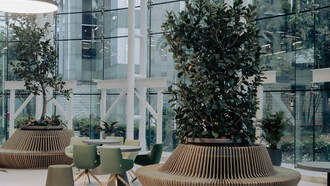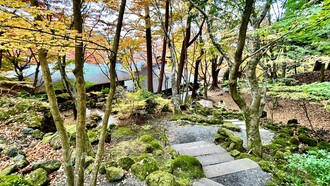Consider your fondest childhood memories: they're likely to be dominated by moments of play, from learning to ride a bike or playing tag with your friends at school, to scoring that game-winning goal for your local soccer club. Play has the capacity to uplift and inspire and is directly associated with joy. It is an inherent human need that benefits our bodies and minds throughout our lives. It leads to the formation and maintenance of healthy relationships, improves creativity and productivity, and includes moments of profound concentration which allow us to learn and absorb.
What if the concept of play could be translated into, and improve upon, the environments we live in? What happens when a sense of playfulness is thoughtfully embedded into how we design and deliver buildings?
In a recent studio at university, we were tasked with designing a vertical high school. For those unfamiliar with this typology, as urbanisation advances, there is a greater demand for schooling in dense urban areas. These schools are horizontally constrained due to the limited lot sizes and are therefore forced to rise vertically. This studio provided the perfect testing ground to explore the confluence of play and architecture. The concept of play was particularly pertinent for this typology given the demographic of the users and the nature of the space. It was an ideal opportunity to imagine ways to reinvent the traditional school setting, which typically takes form as an austere industrial complex with a sequence of monotonous classrooms connected by dreary corridors within uninspired landscapes. It turns out that this setting isn't exactly conducive to learning.
After several weeks of research, our group found that there is an immense opportunity to enhance the well-being and performance of students and staff by employing a playful approach to the constructed fabric of the building and the interior spaces. A playful approach to the architecture encourages a more relaxed and creative style of learning and brings joy to its users.
There is an innate opportunity to increase the quality of the spaces we design by cultivating a playful attitude marked by impartiality, genuine curiosity, and open-mindedness. A touch of playfulness can transform any setting into one that delights and inspires its users, improves well-being, and fosters social connection. Allowing dreams, imagination and true creative freedom to participate in the design process can make architecture more inventive and interesting.
Throughout history, playful concepts have been used in architecture to produce more active and dynamic spaces that facilitate more creative and enjoyable experiences. In the 1960s, postmodern architecture gained a lot of popularity. Postmodernism ushered in a profusion of flamboyant, quirky designs that were anything but minimalist, as a sharp response to the Modernist style, which was predicated on the premise that simplicity was attractive. This style has reshaped landscapes all over the world with bold colours, references to classical and Gothic styles, the use of various materials and shapes, and an air of playfulness. Consider the following 3 examples where a playful approach to the architecture brought about a superior built outcome.
Dr Chau Chak Wing building, Sydney
I need not look further than my backyard to discover a great postmodernist building that employs a playful strategy to create a true icon - The Dr Chau Chak Wing Building, often described as a "beautiful squashed brown paper bag." The flagship project of the UTS’s (University of Technology Sydney) billion-dollar-plus City Campus Master Plan is famed Architect Frank Gehry's first building in Australia. Gehry, formerly Goldberg, is one of the world's most celebrated architects and a key figure in postmodernist architecture. Gehry is known for his physics-defying structures that have transformed run-down cities into tourism hotspots. The business school building is a landmark along with the 'cultural ribbon' that extends from the Sydney Opera House down to UTS. Inside, the whimsical structure creates a stimulating learning environment, while the dancing brick facade delights passers-by. Using five custom-made brick types, 320,000 bricks were set by hand to construct the tessellated facade. Fun fact: the bricks were so difficult to lay that master bricklayer Peter Favetti came out of retirement.
Piramides, Amsterdam
Piramides by Soeters van Eldonk Architecten is another example of architects taking a bold and fun approach. Piramides is a remarkable housing block, school, and a public area in the shape of two pyramid-like structures. Every side of the pyramid is unique. The sloped sides provide spectacular terraces for the apartments and offer a solid transition to the surrounding four-story residences. With its playful form and deep red facade, the building shines out into its plain context, giving the whole area a brand-new energy.
The Greenwich Design District
This is an ambitious project in east London that combines the diversity of art, design, technology, culinary, and music industries, is an incredibly creative and playful approach to the development and design process. The master plan was delivered in an unprecedented and extremely ambitious manner by eight up-and-coming architecture studios, each of which was commissioned to design two buildings without knowing what the others were designing. The result — an incredible amalgamation of buildings with playful contrasts that conjure up a neighbourhood for creative types that’s full of energy and charm. This out-of-the-box approach allowed the developers and architects to pull off the difficult task of making ‘somewhere’ out of ‘nowhere’.
I encourage architects and developers to collaborate in finding methods to incorporate a sense of playfulness and intrigue into their projects for the benefit of both the individual and the collective. Let's contribute to the user experience by creating more dynamic environments that elicit their emotions and make them a little bit happier after experiencing our building. Let's make architecture fun again.















